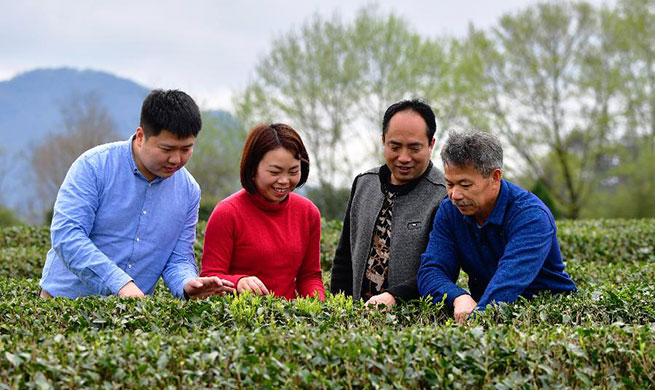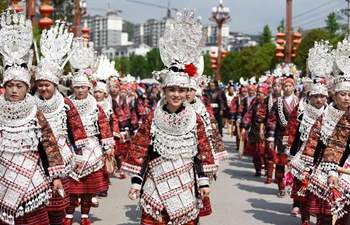CHICAGO, April 20 (Xinhua) -- Researchers at the University of Illinois (UI) have developed new hybrids of purple corn containing different combinations of phytochemicals that may fight obesity, inflammation and diabetes, according to a study in mice posted on UI's website on Monday.
From a strain of maize called Apache Red, the researchers bred 20 genetic varieties of purple corn, each with a unique combination of anthocyanins, the nutritious, natural pigments that give the pericarp its vibrant color.
Anthocyanins are one class of phenols, and studies have associated the consumption of anthocyanin-rich foods with reduced risks of cardiovascular disease, Type 2 diabetes and certain types of cancer.
Using pressurized water, the researchers extracted the anthocyanins from the pericarp of the corn kernels, creating anthocyanin-rich water extracts that were then freeze-dried.
To examine the impact of anthocyanins on obesity-induced inflammation, the researchers combined fat cells called adipocytes from mice with large immune cells called macrophages.
The mouse cell models in the study simulated those of obese people with high concentrations of lipids and inflammation in their cells, or healthy individuals who regularly eat plants containing phenolic compounds.
They observed that the phenolic compounds in the extracts altered the cells' development, reducing the adipocytes' fat content from 8 percent to 56 percent, depending on the differing phenols used.
To study the compounds' impact on insulin resistance, the metabolic dysfunction associated with diabetes, the researchers used a cell-signaling protein to induce insulin resistance in the mouse fat cells, then treated the cells with the anthocyanin compounds and monitored their glucose uptake.
They found that a key marker of insulin resistance decreased by 29 percent to 64 percent, and the cells' glucose uptake decreased by 30 percent to 139 percent, depending on the chemical composition of the anthocyanins used.
"We observed very important changes in molecules that reduced oxidative stress and inflammation in the insulin-resistant adipocytes," said study co-author Diego Luna-Vital, a postdoctoral researcher at UI. "We also found important changes in pro-inflammatory molecules in the immune cells."
The study suggested that different levels and chemical compositions of these phenolic compounds might prevent obesity or improve the insulin profile of people who are obese, Luna-Vital said.
The smaller phenols such as quercetin, luteolin and rutin, which are present in many plant foods, played key roles in reducing some of the obesity, inflammation and some markers of Type 2 diabetes, said food science professor Elvira Gonzalez de Mejia. "While others, such as vanillic and protocatechuic acid, decreased the potential conversion of pre-adipocytes to adipocytes."
"It's very important to note that it's not just one or two compounds, but the combinations of phenolics" working together that were responsible for the beneficial effects, she added.
The study has been published in the journal Food Chemistry.













